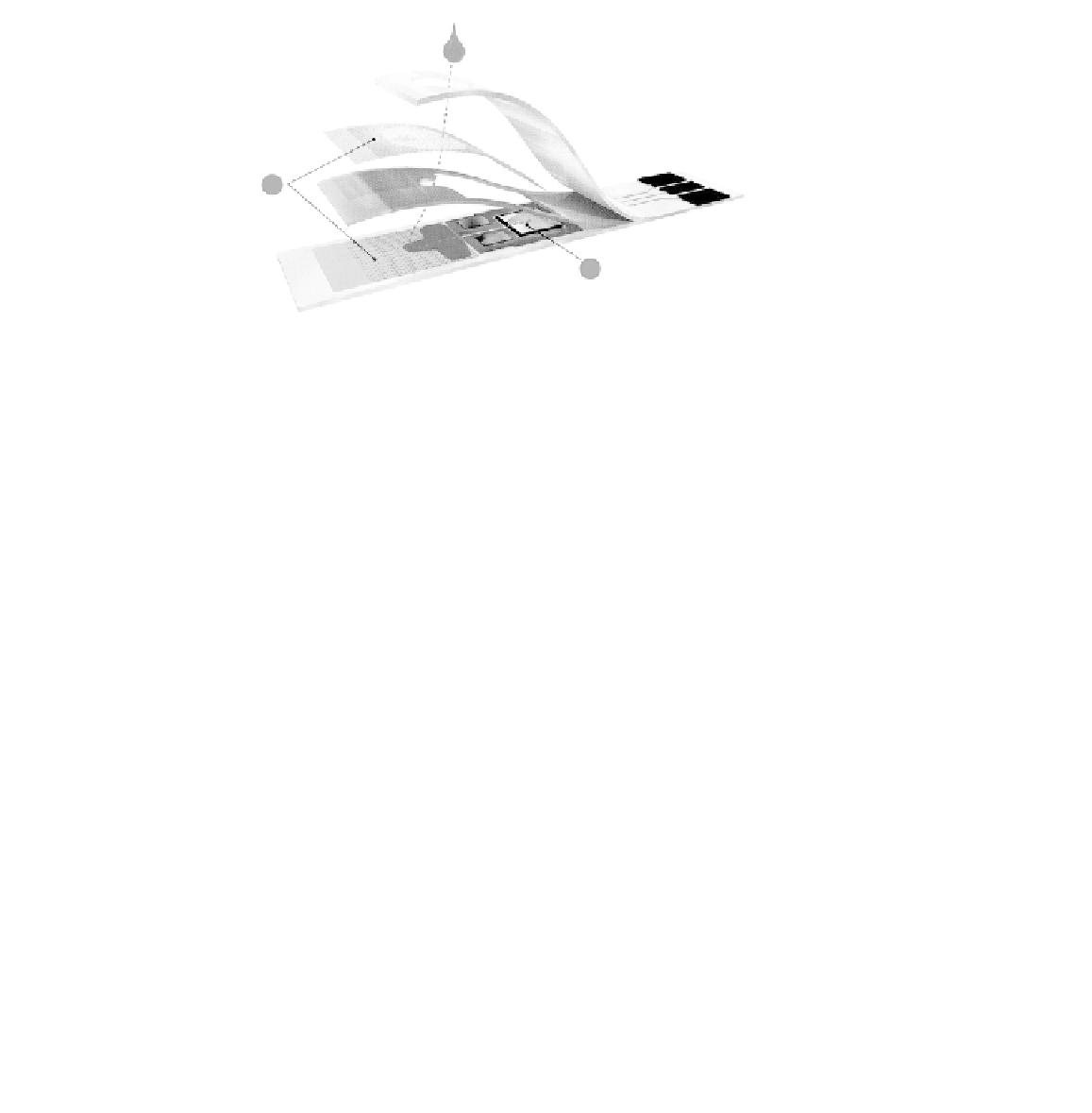Biomedical Engineering Reference
In-Depth Information
B
A
FIGURE 3.4
A typical commercial strip for self-testing of blood glucose (based on a biosensor manu-
factured by Abbott Inc.) (see Plate 1 for the color version).
TABLE 3.2
Major commercial electrochemical systems for self-monitoring of blood glucose
Source
Trade name
Enzyme
Mediator
Abbott
Precision
GOx
Ferrocene
FreeStyle
GOx
Osmium “wire”
Bayer
Elite
GOx
Ferricyanide
LifeScan
SureStep
GOx
Ferricyanide
One Touch Ultra
GOx
Roche-Diagnostics
Accu-Check
GOx
Ferricyanide
The control meter is typically light and small (pocket size), battery operated, and
relies on a potential-step (chronoamperometric) operation, in connection with a
short incubation (reaction) step. Such devices offer considerable promise for obtain-
ing the desired clinical information in a simpler (“user-friendly”), faster, and cheaper
manner compared to traditional assays. The fi rst product was a pen-style device (the
Exactech™), launched by Medisense Inc. in 1987, that relied on the use of a ferrocene-
derivative mediator. Since then, over 40 different commercial strips and pocket-sized
test meters, for self-monitoring of blood glucose - based on the use of ferricyanide or
ferrocene mediators - have been introduced [32]. Yet, over 90% of the market is being
shared by Life Scan, Roche Diagnostics, Abbott, and Bayer (Table 3.2). In all cases, the
diabetic patient pricks the fi nger, places the small blood droplet on the sensor strip, and
obtains the blood glucose concentration (on an LC display) within 5-30 sec. In addi-
tion to fast response and small size, such modern personal glucose meters have features
such as extended memory capacity and computer downloading capabilities.







Search WWH ::

Custom Search